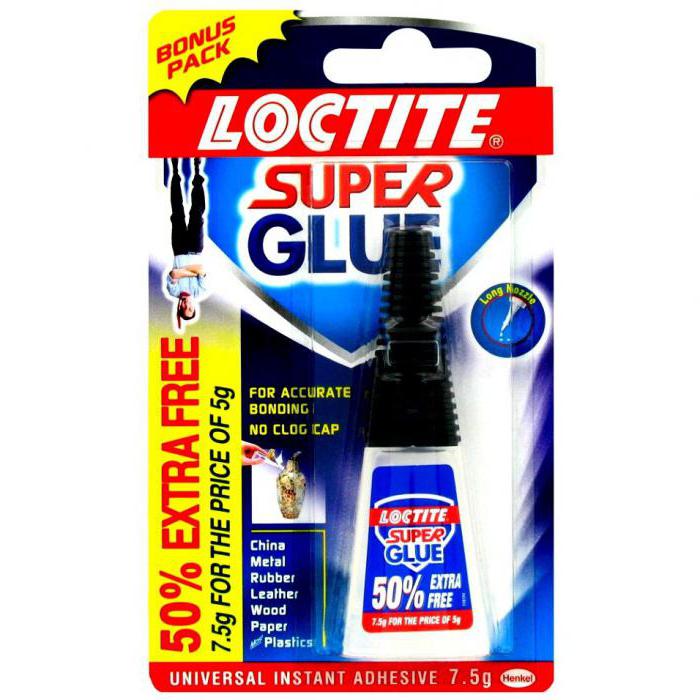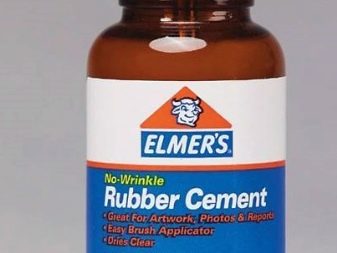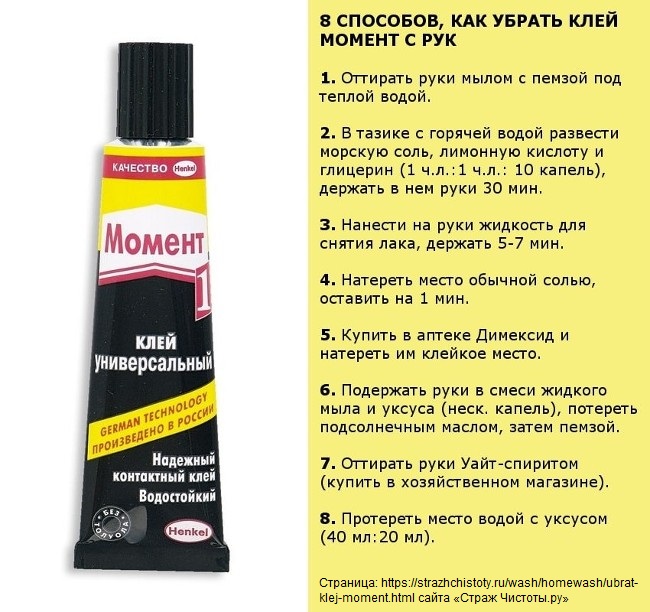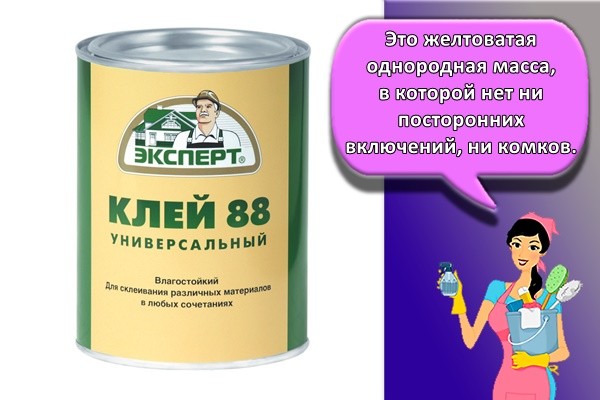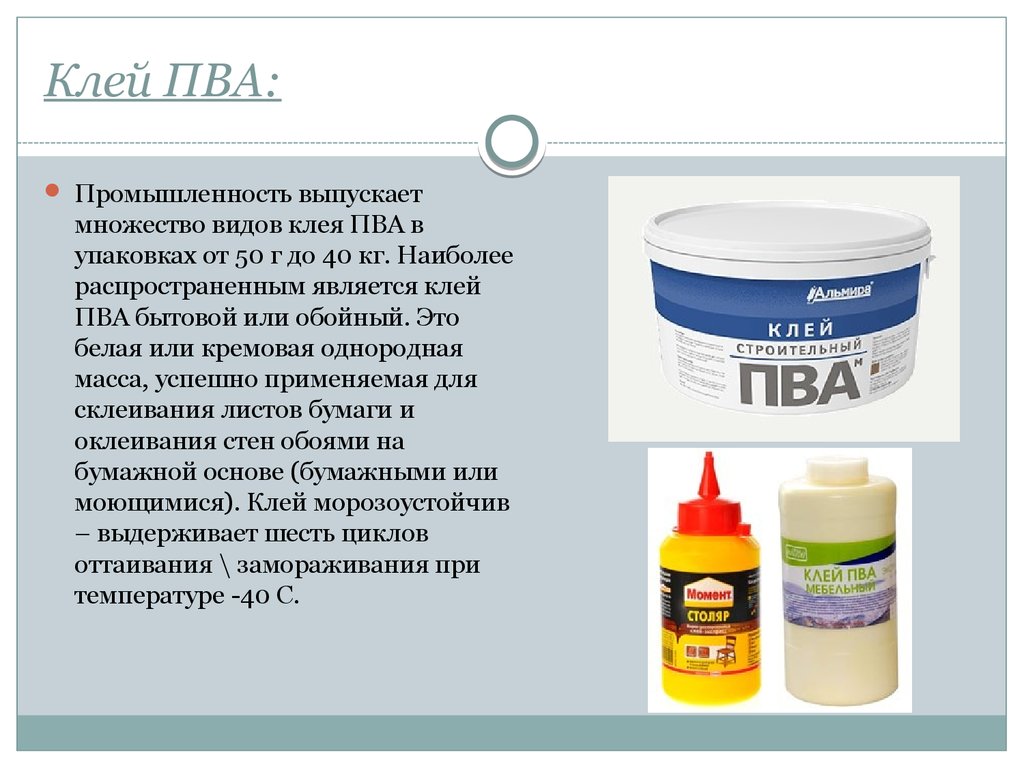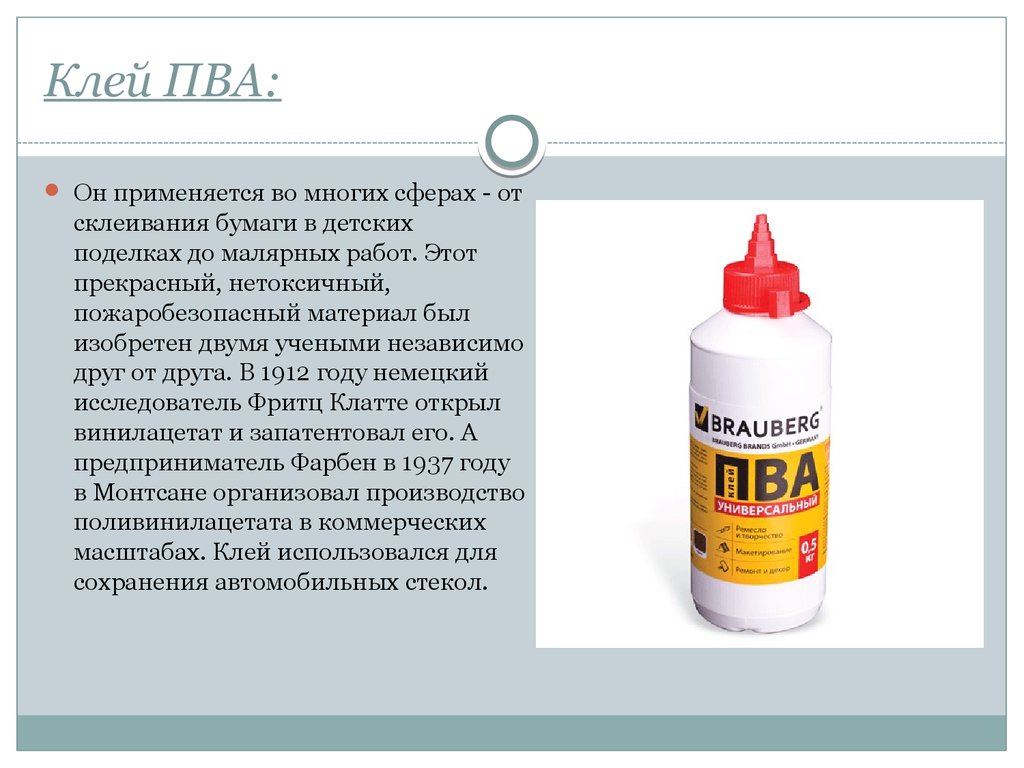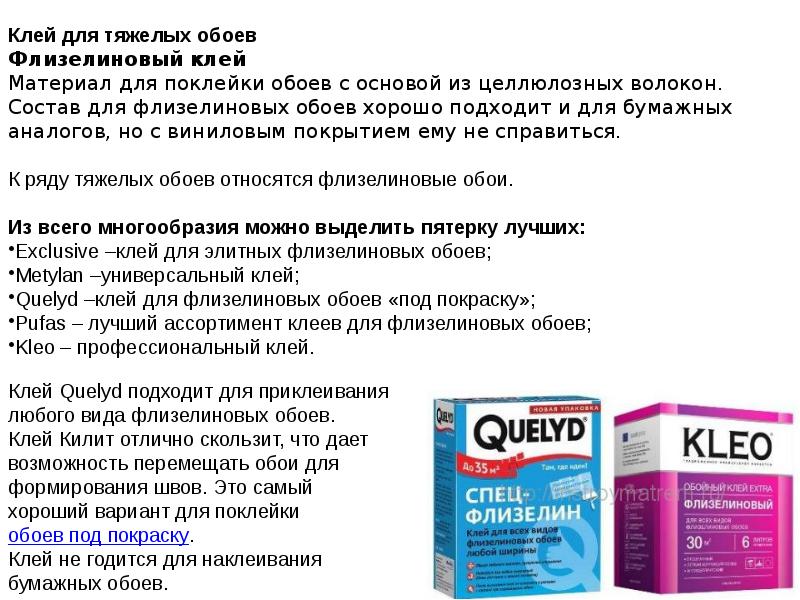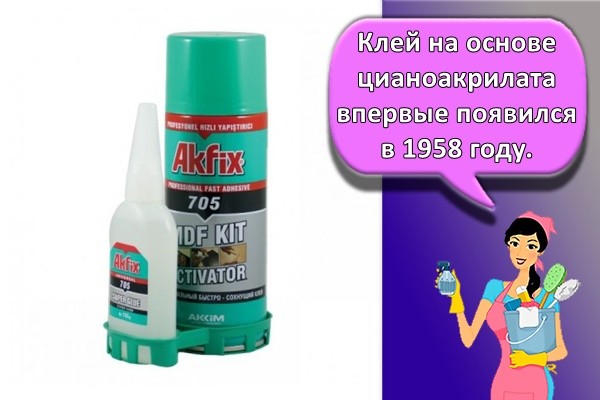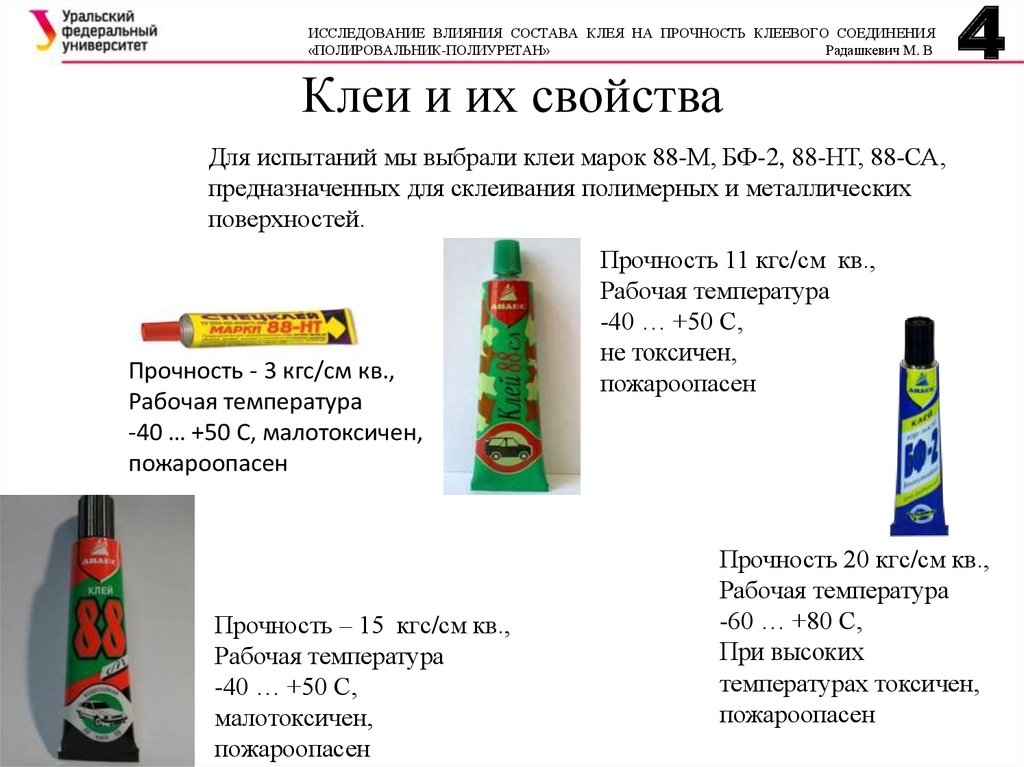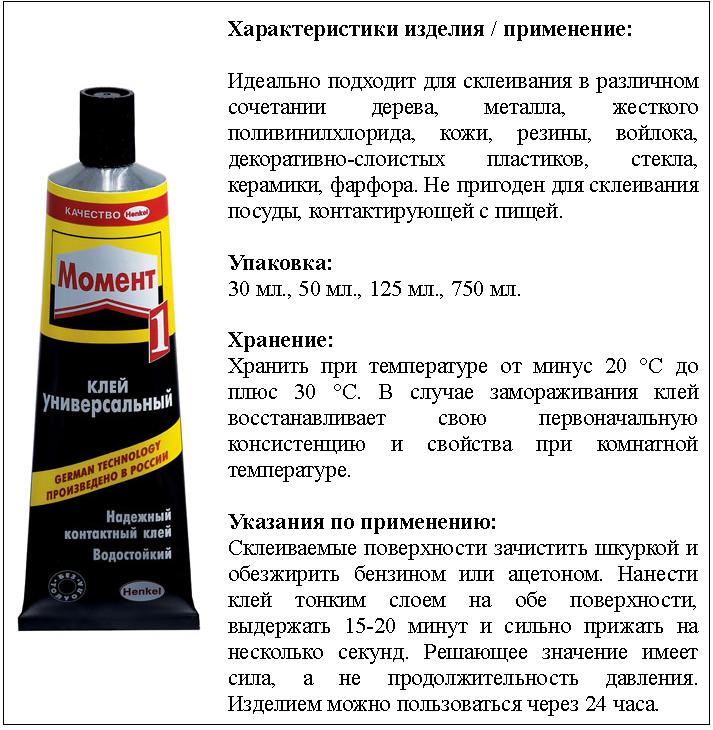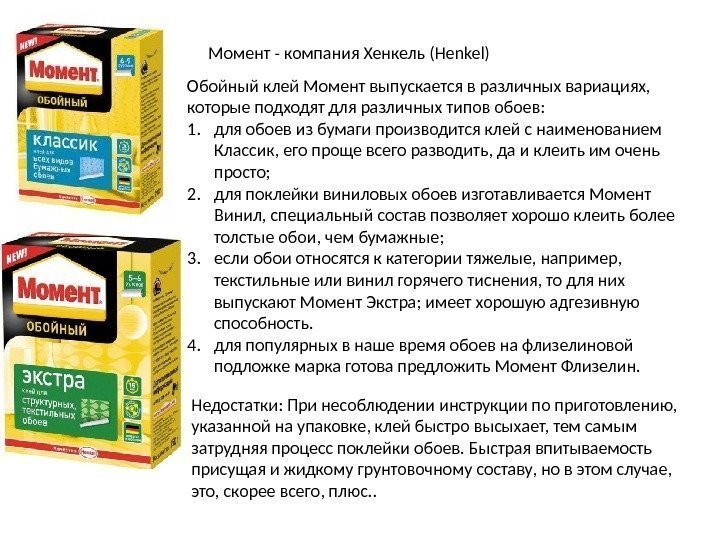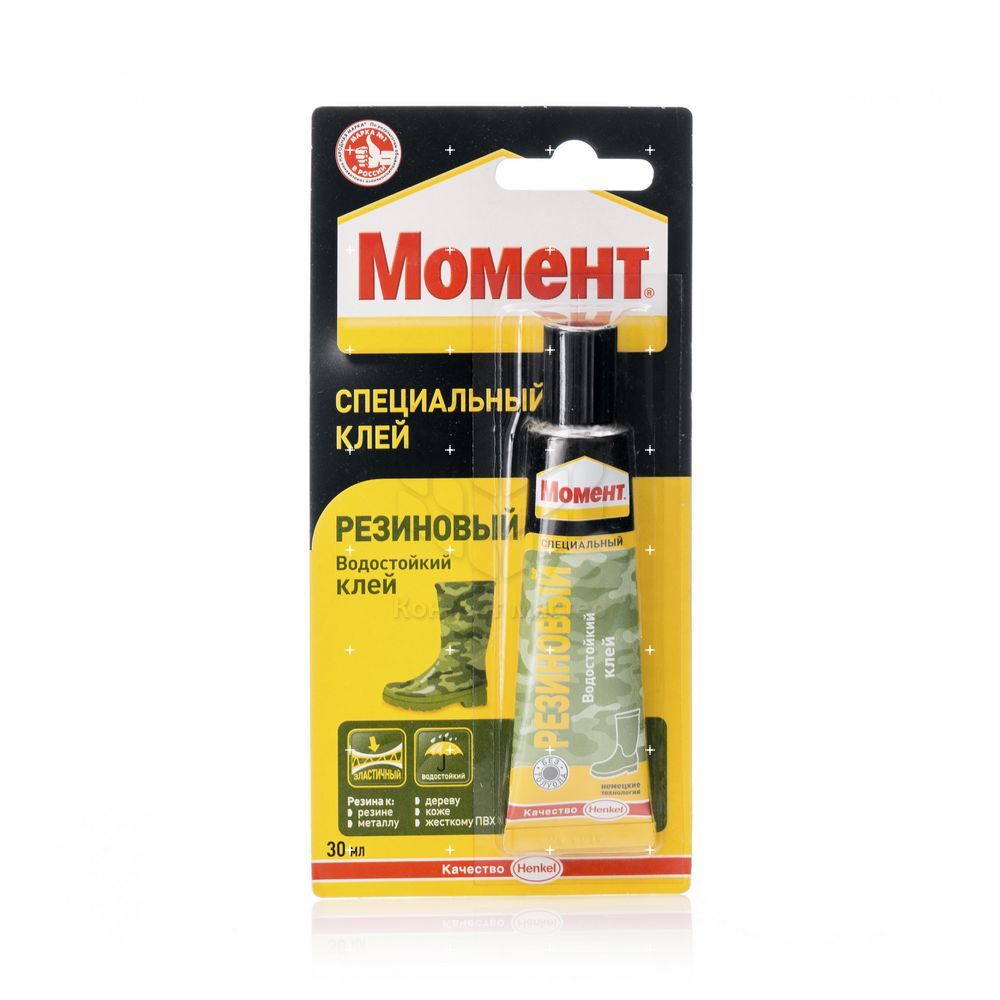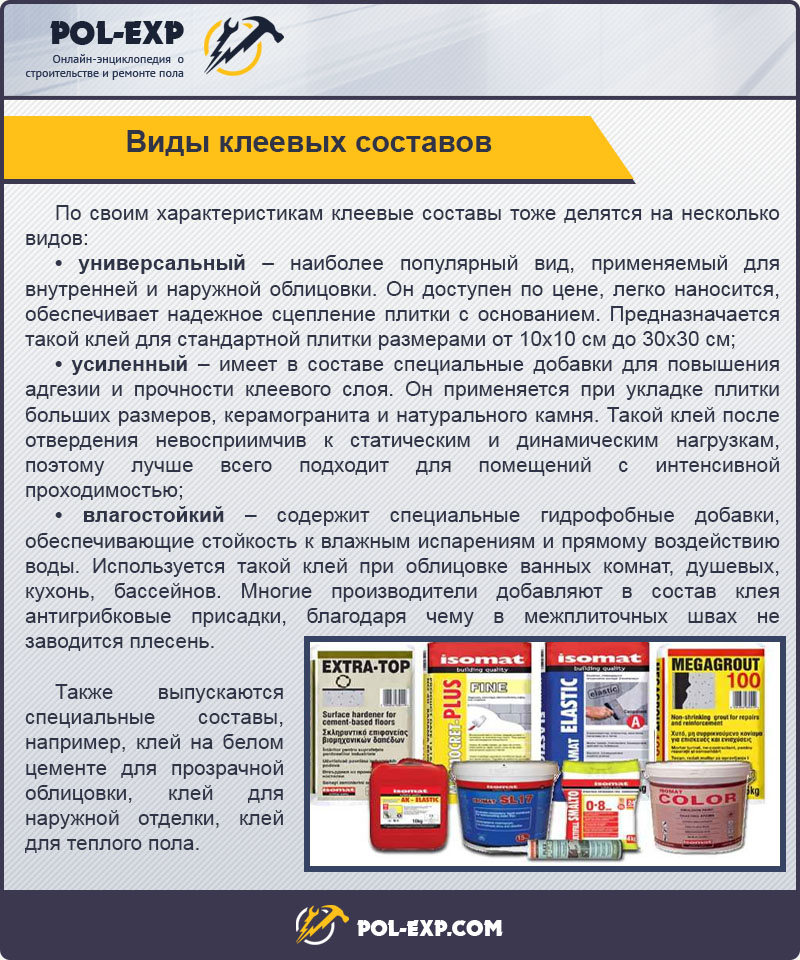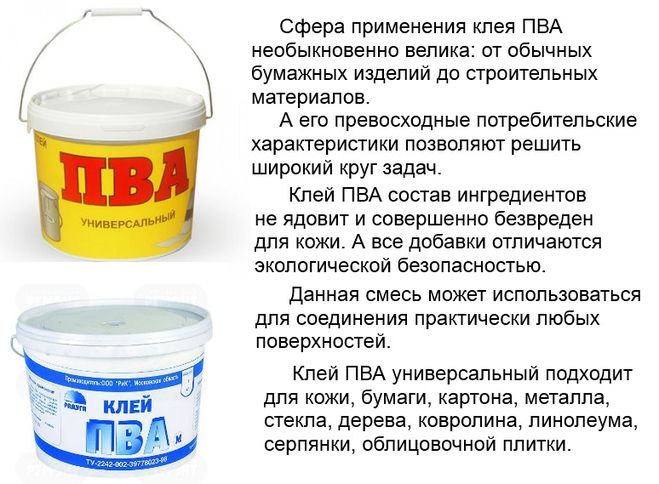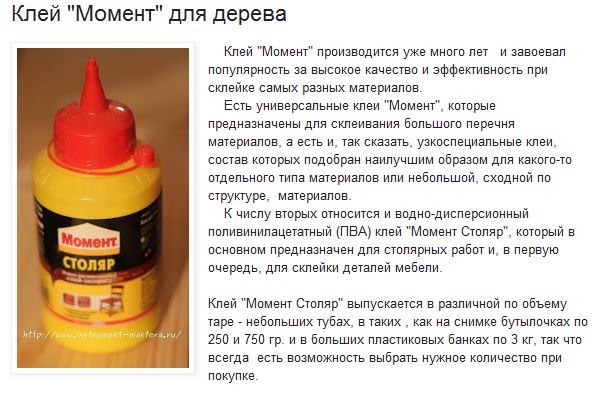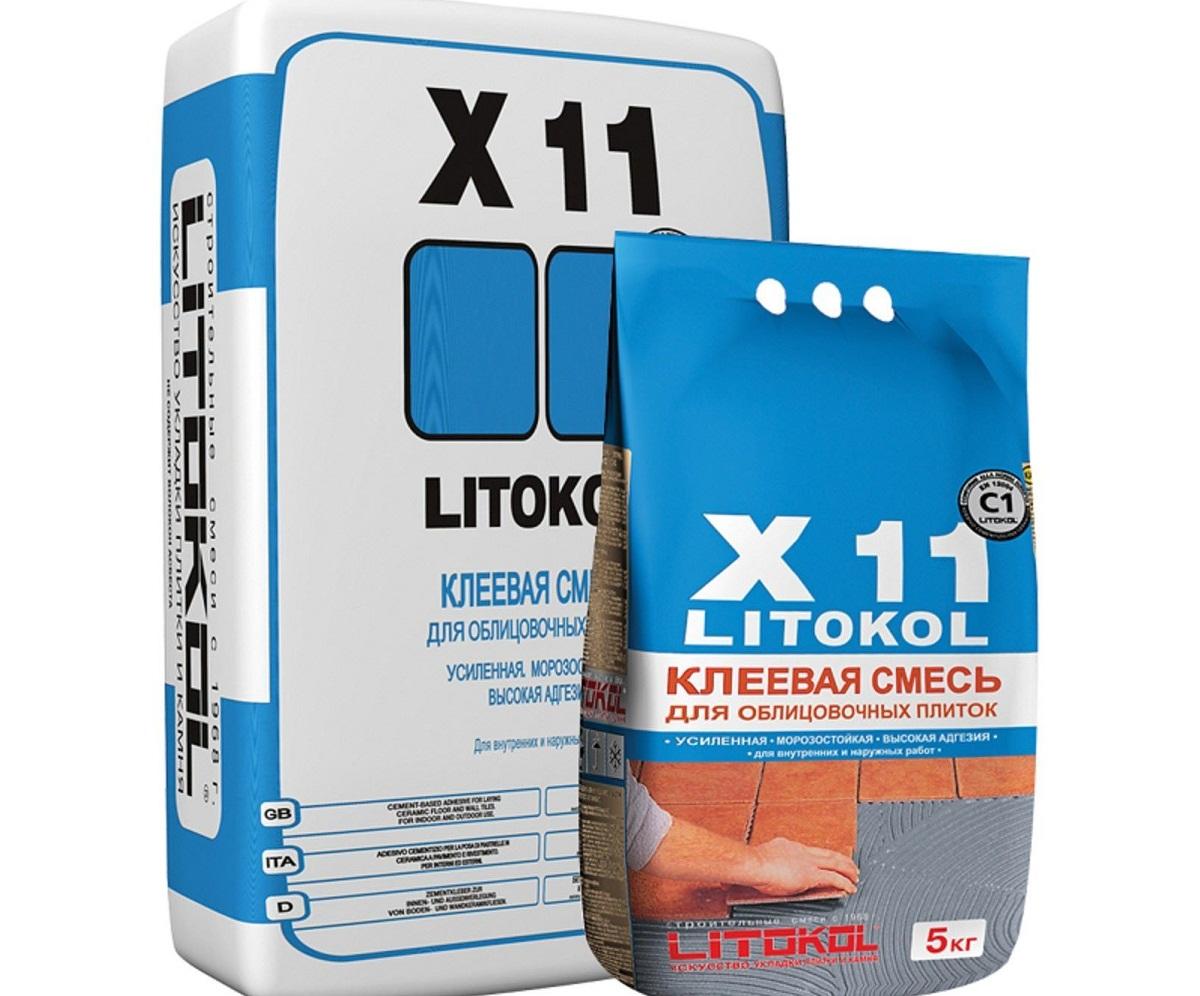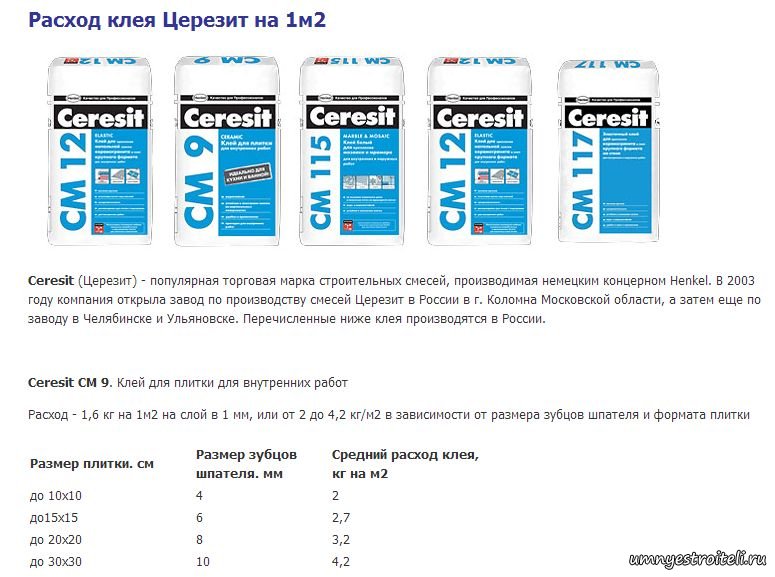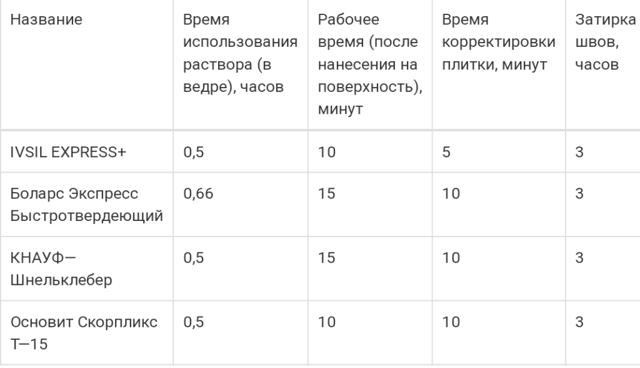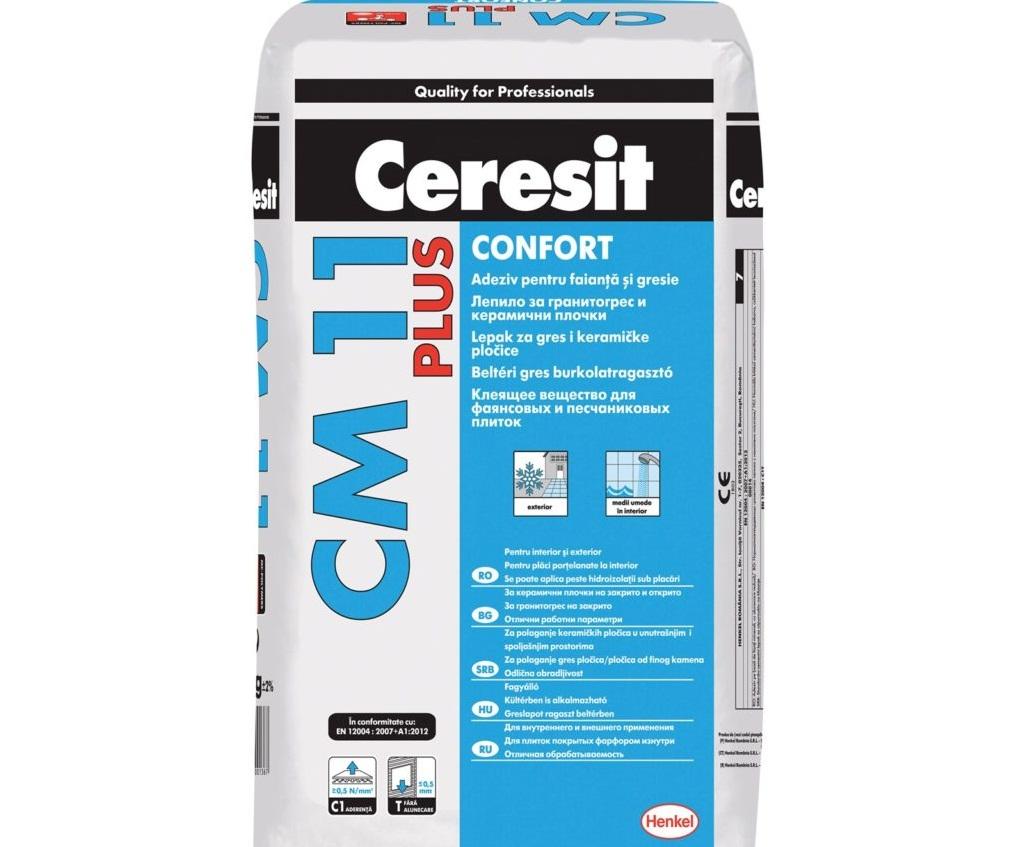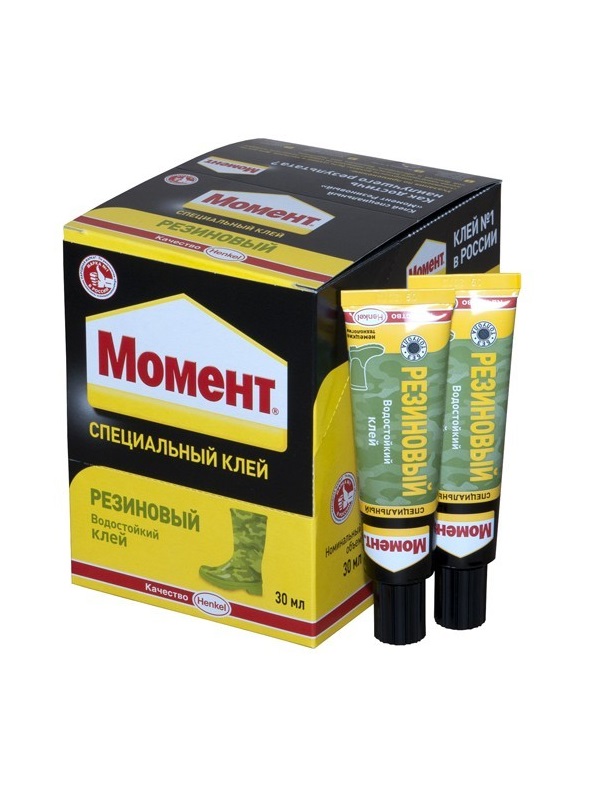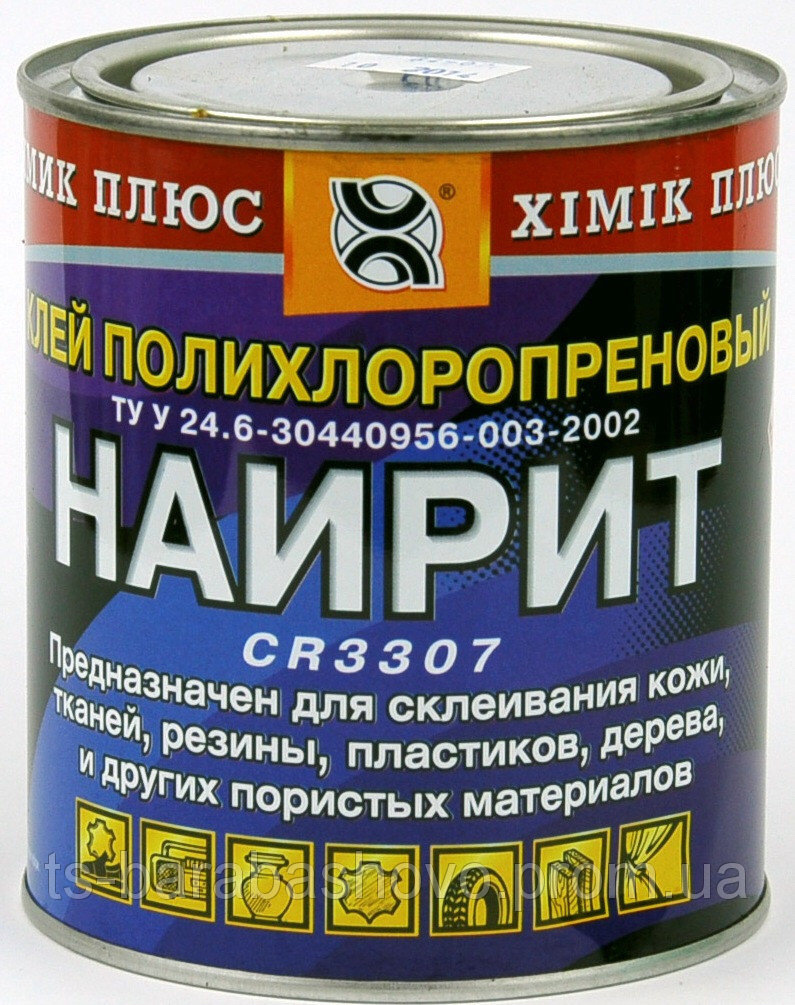What is polyurethane adhesive
This type of adhesives quickly gained popularity after their appearance on the market. Polyurethane adhesive is a composition based on polyurethanes, polymers with high film-forming ability. After hardening, the mixture is resistant to aggressive chemicals and the external environment. The adhesive mixture, subject to the technology, glues together almost any material: metal, glass, ceramics, PVC, wood, rubber. The composition is practically odorless, viscous viscous consistency. The color of the glue in the finished state depends on the components (it can be amber, white, gray).
Composition
The basic components of polyurethane adhesives are aliphatic or aromatic isocyanates and hydroxyl-containing oligomers, oligoesters. To initiate hardening in two-component compositions, water, alcohols, aqueous solutions of alkali metals and organic acids are used. Rarely do modern adhesives use solvents to balance and adjust components. Surfactants (surfactants) are added to the polyurethane glue for better wetting of materials when gluing. Some adhesives additionally contain synthetic resins.
Specifications
In modern construction and renovation work, polyurethane adhesive mixture is considered one of the ideal compositions for work. Most brands are safe for human health, easy to use (applies to one-component types), easily withstand extreme loads, have anti-corrosion properties and retain their strength for many years. As with any chemical mixtures, the main thing is adherence to the application technology. General specifications for polyurethane adhesives:
- Durability. While maintaining stable temperatures and the stipulated mechanical loads, the dried composition retains its bonding properties for up to 30 years (depending on the manufacturer's composition).
- Strength. Polyurethane compounds have high elasticity, which allows them to withstand thermal expansion of materials (temperature differences up to 40 degrees Celsius) or physical movements within acceptable limits without rupture.
- Moisture resistance. The hardened adhesive mixture does not pass or absorb moisture (if the installation is observed, it completely seals the seams). The same feature does not allow the development of mold, pathogenic fungi and organisms.
- Drying time. After application to the substrate, one-component glue retains its properties for up to 60 minutes, and two-component glue - up to 2 hours.
- Strength curing period. Depending on the composition and the materials to be glued, the final state is achieved in 2-3 hours (for example, when repairing shoes) and up to 48 hours when laying ceramic tiles, parquet, gluing wooden parts.
- Fully cured mixture and parts can be used at temperatures up to 150 degrees Celsius and above. The lower limit is –60 degrees, which is ideal for use in all regions of Russia.
Application
Polyurethane adhesive is used in all areas of construction, production and repair. Such distribution was achieved due to excellent characteristics while adhering to gluing technology, minimal toxicity of most brands, ease of use for non-professionals. At the same time, 1-component and 2-component glue practically does not differ in efficiency. Where are polyurethane adhesives used:
- production and installation of metal-plastic windows, composite materials;
- production of sandwich panels;
- in mechanical engineering for fixing elements of the skin and hull;
- installation of ceramic and tiles in residential or technical premises;
- laying parquet boards and laminate;
- gluing mosaics (marble, onyx, slate);
- bonding foam insulation, foam, fiberboard, chipboard, MDF;
- household use: repair of shoes, minor breakdowns of plastic, glass, wood, etc.
Basic rules for laying parquet boards
Before laying parquet flooring, it is necessary to check the humidity and temperature of the concrete screed. It is better to do this using a special device.
Particular attention should be paid to measurements in corners where there is high humidity.
If there is no device, then you should be guided by the approximate time of concrete hardening - about 2 weeks. The moisture content required to continue finishing work should not exceed 5%.
Method of planting on glue
Laying in this way is quite reliable. You just need to prepare a large notched trowel and a small tool. Stacking algorithm:
- parquet glue (slightly larger than the size of the board) is applied to a screed or other base that has dried out after the soil with a comb trowel;
- parquet floor is laid on the surface smeared with glue and lightly fixed with light pressure (excess protruding from under the bar is immediately removed).
If the parquet lamellas are small, then it is allowed to lay out 3-4 details of the pattern at once.
Option without rigid fixation
- a backing is lined on the floor (the joints of the material are fastened with tape);
- lay out the first lamella with the top to the wall;
- lay the boards in parallel in a row, lightly tapping with a wooden mallet;
- the next row of parallel elements is laid down with an offset of ½ lamellas.
Using additional fasteners
It is used when laying thick parquet flooring:
- parquet strips are laid on glue, fastened with locks;
- every 30-35 cm a self-tapping screw is screwed on the surface of the coating.
How to lay parquet on a concrete floor
The lamellas are laid on the concrete screed according to the same scheme as on other surfaces. But here you need to take into account several nuances:
- lay the elements on a solid cement screed;
- before laying, check the moisture content of the concrete (no more than 5%);
- adhesive for a parquet board on a screed must be chosen with high adhesive properties.
It is not difficult to lay out the parquet floor yourself. But in order to ensure the strength and durability of the decorative coating, you need to choose the right glue and prepare the base.
Types of glue for rubber
Rubber glue can be divided into two categories, guided by the following criteria - the volume of dry residue and the composition of the rubber. GOST 2199-78 regulates the amount of dry residue. There are two types of rubber glue available:
- A - 8 - 12% dry residue;
- B - 6 - 8% dry residue.

Rubber glue
Liquid rubber is classified according to the composition of the rubber that it contains. Rubber glue made from natural rubber is not suitable for all tasks that arise in different industries. Therefore, formulations based on synthetic rubbers have been developed.
Natural rubber has low resistance to aggressive environments and high temperatures. Among the rubber adhesives produced on the basis of rubbers, the following are the most common:
Rubber adhesive made from natural rubber. It uses sulfur as a vulcanizing agent. Such an adhesive composition is used for gluing paper, leather, fabrics.
Chloroprene glue for rubber. When it is obtained, oxides of some metals are added during vulcanization. This solution has led to the fact that this composition shows good results when gluing metals, wood, glass and plastics.
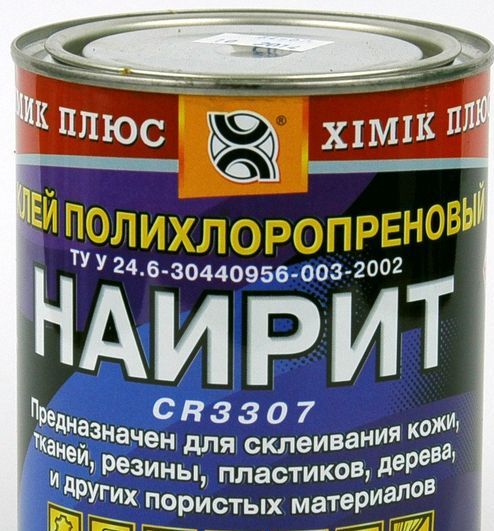
Chloroprene Rubber Adhesive
Adhesive based on nitrile butadiene rubber. For vulcanization, traditional sulfur is used, but with the obligatory addition of thiuram (piperonyl butoxide). This solution gives the adhesive good water resistance and is widely used for bonding metals, wood, glass and ceramics.
Silicone rubber based rubber adhesive.This composition can only solidify in the presence of tetrabutoxylane. This rubber adhesive should only be used on homogeneous rubber.
Styrene-butadiene rubber glue. This composition has poor adhesion properties and therefore it is used only for industrial purposes.
Two-component polyurethane adhesive for rubber. It consists of two parts, a urethane rubber solution and an isocyanate-based hardener. It is used in the shoe industry. It is used to connect parts made of thermoplastic elastomers, polyvinylchlorides.
The industry also produces a one-component adhesive for rubber based on polyurethane, it does not contain a hardener.
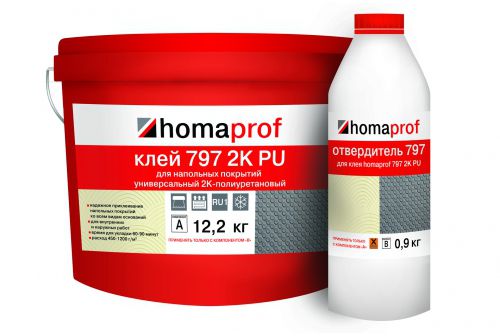
One component polyurethane based rubber adhesive
Glue 88. This substance contains two main components - rubber compound and phenol-formaldehyde resin. It is part of a mixture of ethyl acetate with nefras. This composition is distinguished by water resistance, setting speed. Its scope is the combination of metals, wood, polymers, glass and many others.
Classification of alkyd enamels
Depending on their technical characteristics and areas of use, alkyd enamels are divided into subspecies. Each brand has its own code, consisting of letters and numbers. By this cipher, you can accurately determine the purpose of the composition and its properties. For example, PF-120 is produced on the basis of the pentaphthalic component; one means that the composition is intended for facade work, and the number 20 indicates the catalog number.
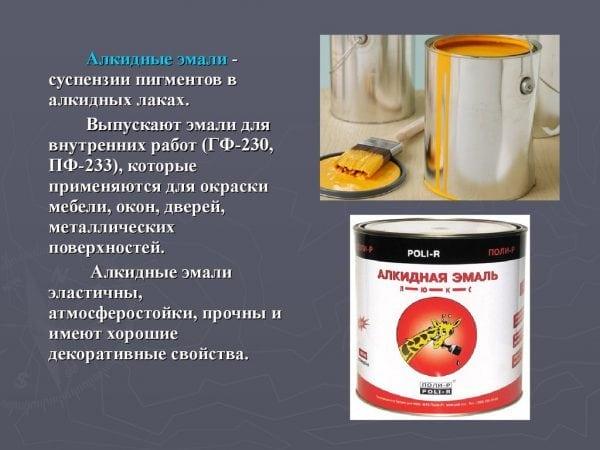 Types of alkyd enamels
Types of alkyd enamels
In addition to the unit, other numbers are used:
- zero - primer-enamel;
- two - composition for interior work;
- troika - preservation paint and varnish material used to seal equipment;
- four - moisture resistant composition;
- five - paints for solving specialized tasks (scaring away pests, lighting in the dark, etc.);
- six - resistance to fuels and lubricants;
- seven - chemical resistance;
- figure eight - thermally stable compounds;
- nine - electrical insulating and conductive properties.
Below are the properties of the most common alkyd enamels:
- GF-230 is a glyphthal compound designed for painting interior surfaces. However, GF-230 can only be used for painting walls and ceilings, but not floors, since the composition is unstable to mechanical stress. There are many shades of glyphthal enamel, from light cream to dark colors. Surface drying time - up to 24 hours. A distinctive feature is a pronounced pungent odor.
- PF-133 is used for processing metal or pre-primed surfaces. Differs in low covering power (20-120 grams per square meter), therefore the composition is applied in two layers. Drying occurs after a couple of hours. You can choose from 15 not very bright shades. The paint is intended for temperate climates, where the surface retains its performance characteristics for 5-6 years without cracking or deformation.
- PF-115 is used for painting metal, wood and other surfaces. Due to insufficiently high hiding power (30-120 grams per square meter), it is applied in two layers. The buyer has access to 24 shades of paint with high saturation and brightness. It is applied using a spray, but a brush can also be used. Drying time varies between 8 and 24 hours.
- PF-223 is intended for painting wood and metal. It is especially often used for dyeing batteries, as it is characterized by increased heat resistance. The assortment includes 17 different shades. Before use, the paint is diluted with solvent, xylene or gasoline. Complete drying occurs after 30-36 hours. A characteristic feature of the paint is a pungent pungent odor.
- PF-253 is used for painting wooden floors (after priming). The paint and varnish material is applied in two layers.
- PF-126 is sold together with filler NF-1, which acts as a hardener.
- Matt enamels are used for both interior and facade work. This type of paint is resistant to moisture, chemicals and oils. The coating is capable of withstanding temperature fluctuations from -50 to +60 degrees Celsius. Differs in high covering power (90-180 grams per square meter). The composition must be diluted with white spirit or solvent.
- Aerosol enamels. As mentioned above, the main difference between enamels in cans from all others is the method of application, as well as faster drying.

